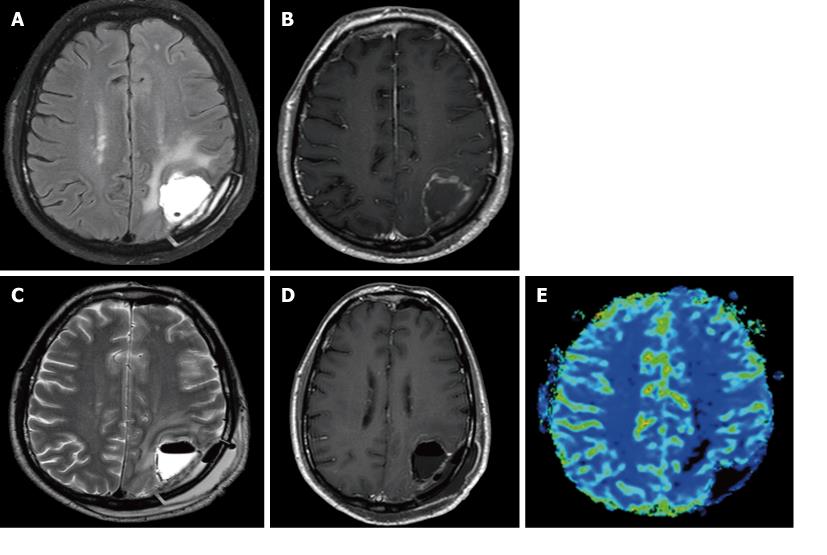Copyright
©2011 Baishideng Publishing Group Co.
World J Radiol. Nov 28, 2011; 3(11): 266-272
Published online Nov 28, 2011. doi: 10.4329/wjr.v3.i11.266
Published online Nov 28, 2011. doi: 10.4329/wjr.v3.i11.266
Figure 2 Magnetic resonance imaging appearance in a 54-year-old male patient without tumor progression (Patient 1).
A: Post-operative day 7, (A) T2 weighted image (T2WI) (TR, 3000 ms; TE, 80 ms) and (B) post-contrast T1 weighted image (T1WI) (TR, 509 ms; TE, 14 ms) demonstrate increase in T2 hyperintensity and enhancement, respectively, surrounding the resection cavity site compared to the baseline post-operative images (not shown); C, D: Post-operative day 20, (C) T2WI (TR, 3000 ms; TE, 80 ms) and (D) T1WI (TR, 509 ms; TE, 14 ms) demonstrate a decrease in T2 hyperintensity and enhancement, respectively, surrounding the resection cavity site; E: MR perfusion [relative cerebral blood volume (rCBV) maps] do not show any increase in rCBV confirming previous that findings were due to post-treatment changes (pseudoprogression) rather than recurrence.
- Citation: Colen RR, Zinn PO, Hazany S, Do-Dai D, Wu JK, Yao K, Zhu JJ. Magnetic resonance imaging appearance and changes on intracavitary Gliadel wafer placement: A pilot study. World J Radiol 2011; 3(11): 266-272
- URL: https://www.wjgnet.com/1949-8470/full/v3/i11/266.htm
- DOI: https://dx.doi.org/10.4329/wjr.v3.i11.266









